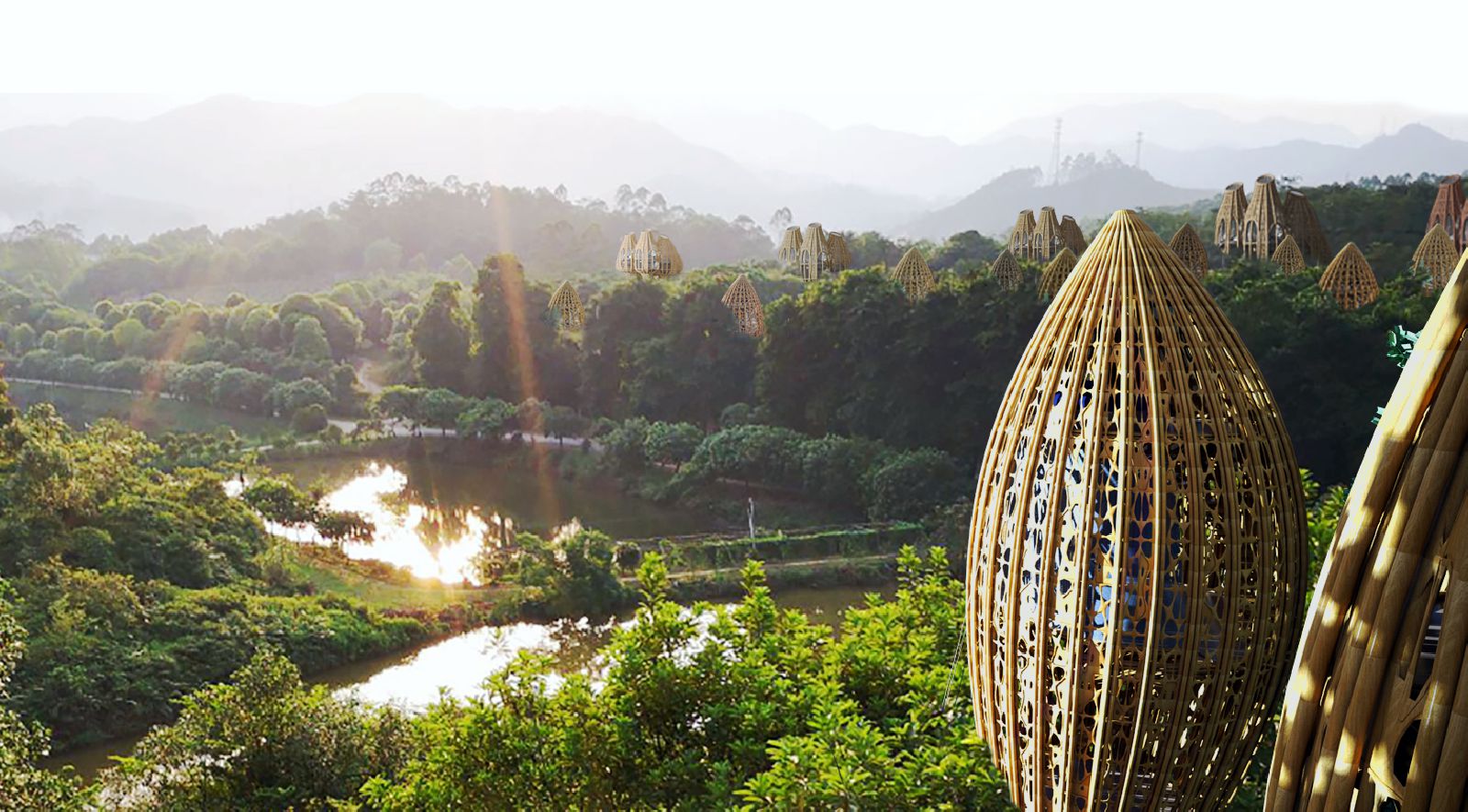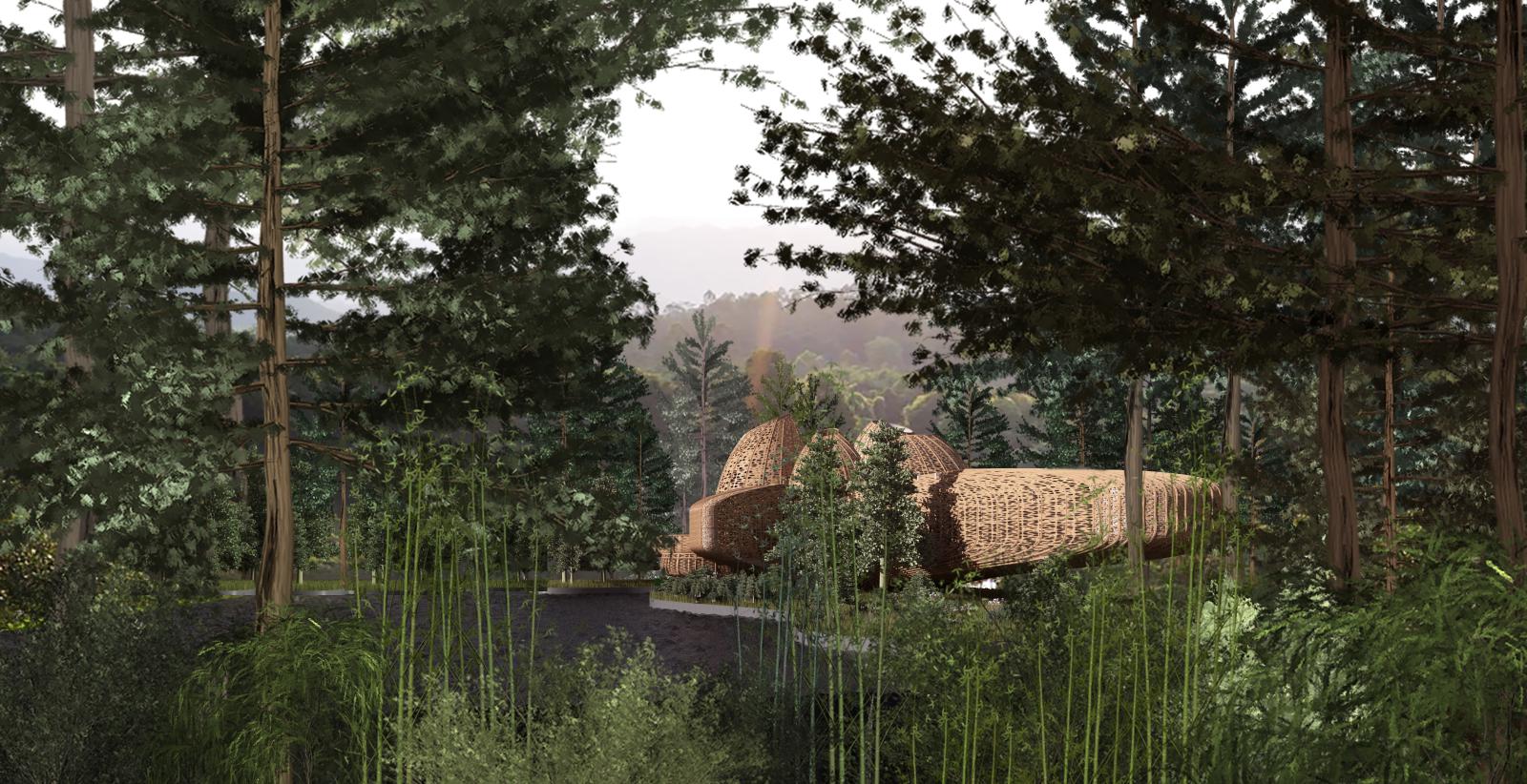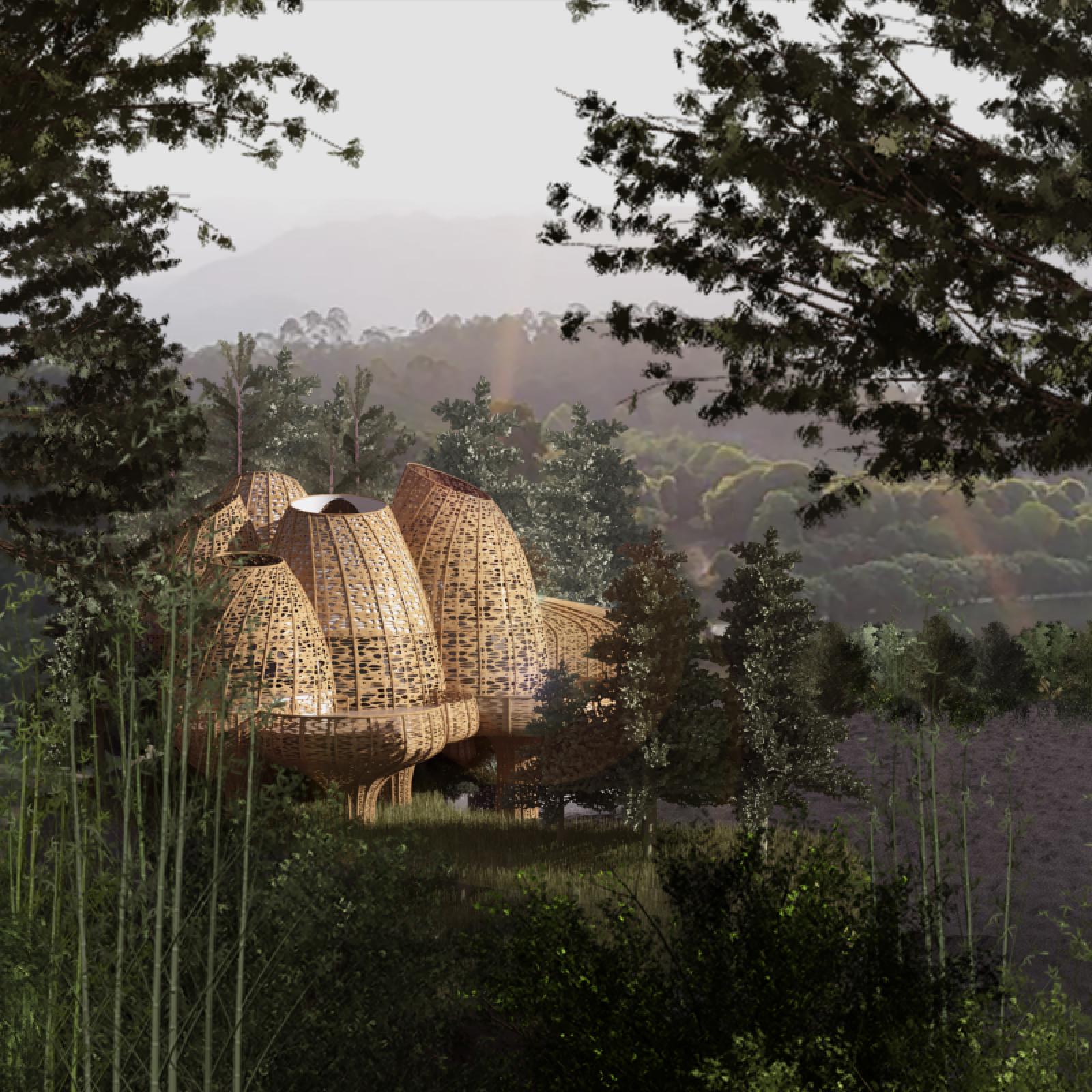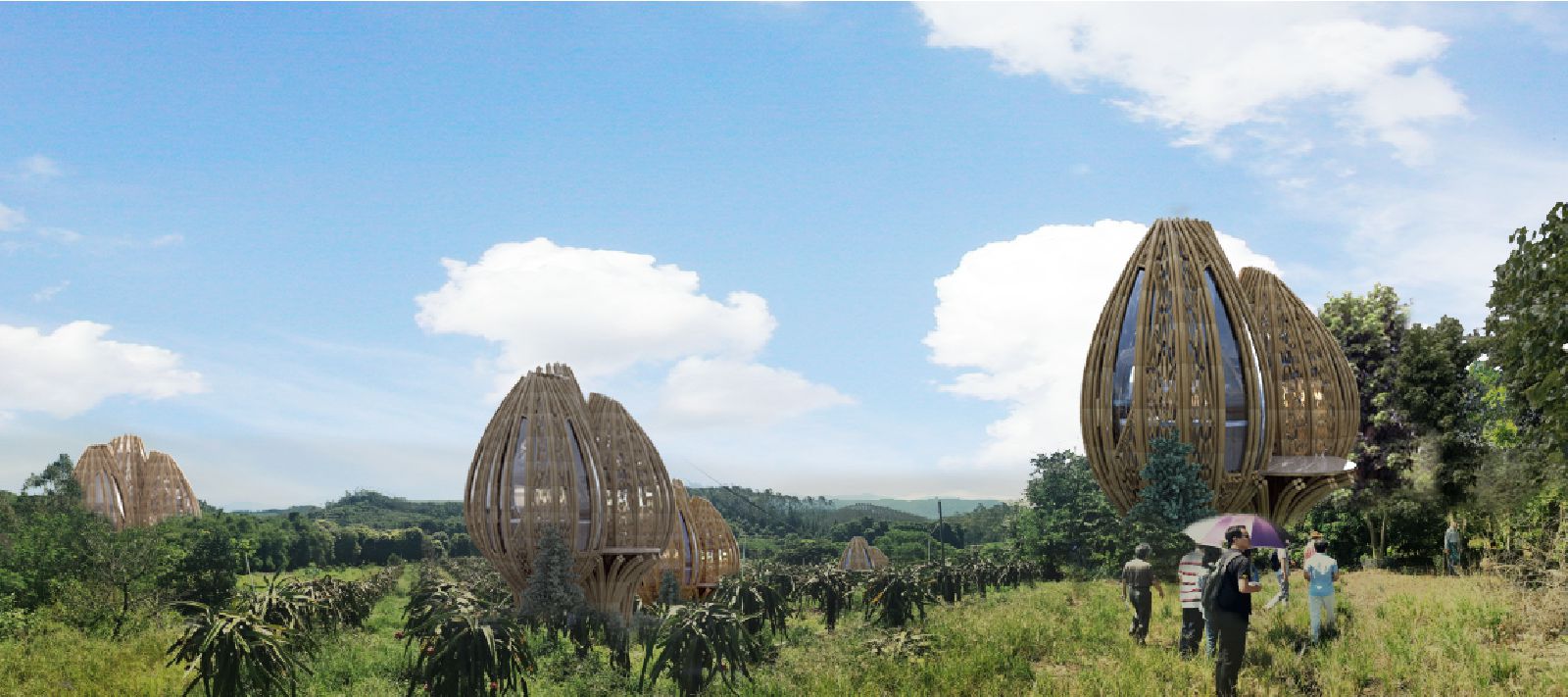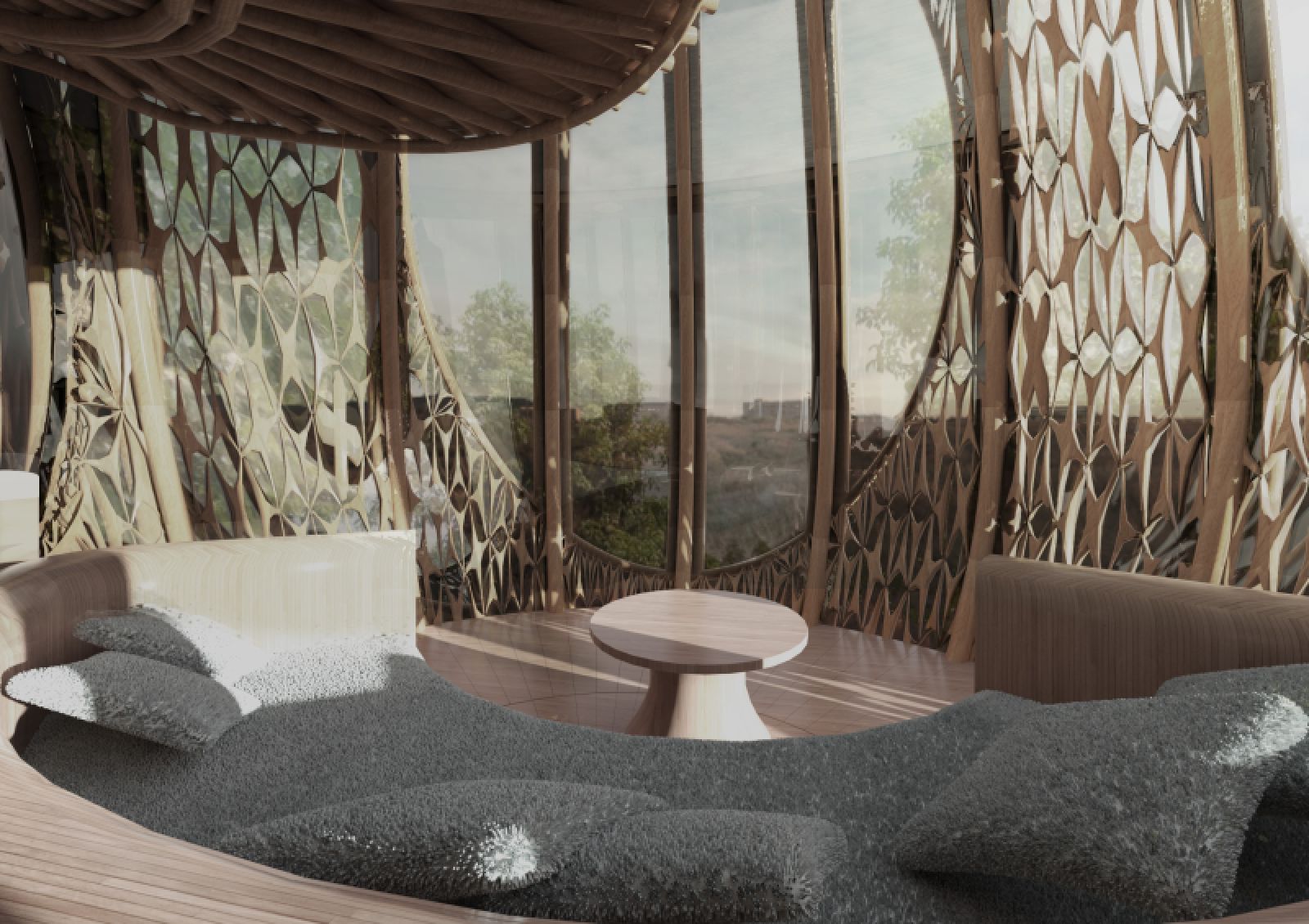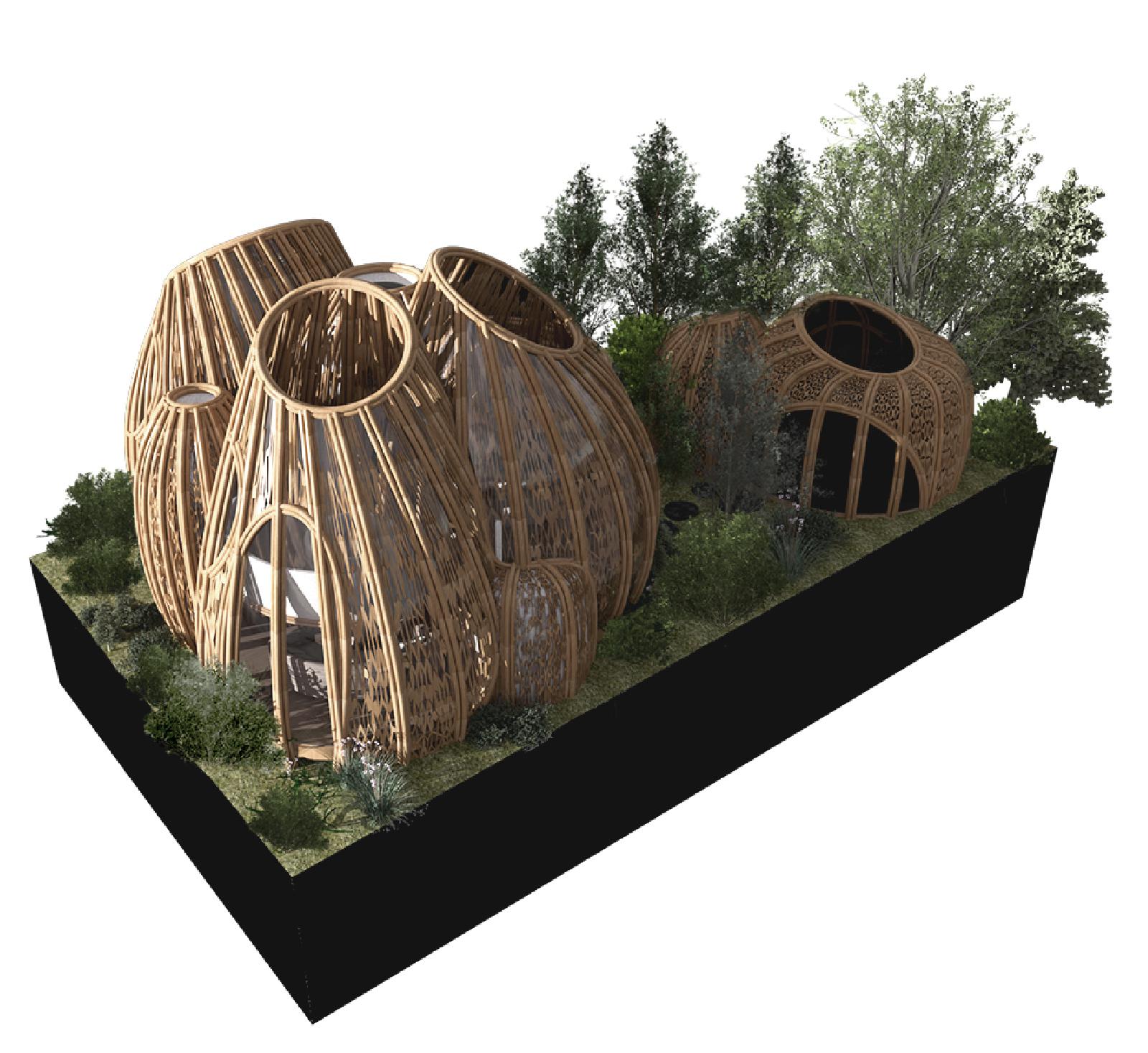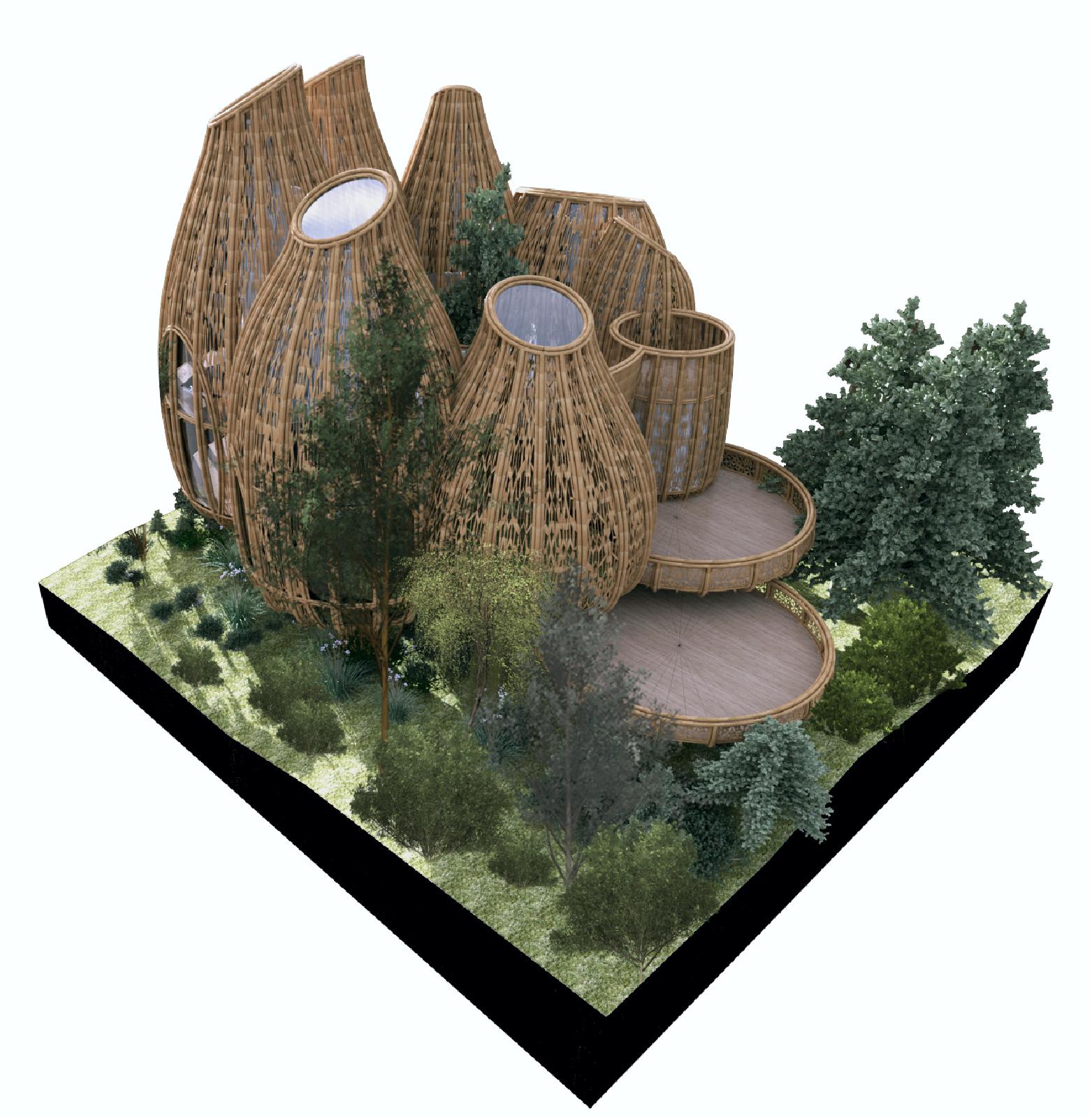The brief of the competition was to develop the wider masterplan and architectural identity for the 1000 tree estate a wooded area outside, Huizhou City, Guangdong Province, China which includes a large number of protected old growth trees. The aim is to encourage a new form of lower impact ecological tourism providing a retreat and space to relax away from the sprawling metropolitan areas in this part of China.
Design Concept
The project concept was inspired by the idea of the retreat buildings as a collection of unique objects scattered throughout the forest landscape, visually distinct from each other and yet connected, promoting exploration and wandering through the 1000 tree estate. All the dwellings have a single architectural identity that is inspired by and merging with the existing landscape.
It was important that the proposals be visually of a small scale, touching the ground lightly and be able to be adapted across the steeply contoured site maximizing those opportunities for views out into the landscape whilst maintaining privacy for people both inhabiting the manor both internally and when using external spaces which form a key part of each dwelling.
Our aim was to break up the silhouette of each dwelling down to the scale of the forest, to minimize their visual impact from a distance, by breaking up the units into room sized volumes, different types, form distinct clusters reflecting the spatial functions within. The architectural language was inspired by the collections of old bamboo rice baskets that are often stored together and come together in different shapes and sizes, bundled together unified by their common material and assembly.
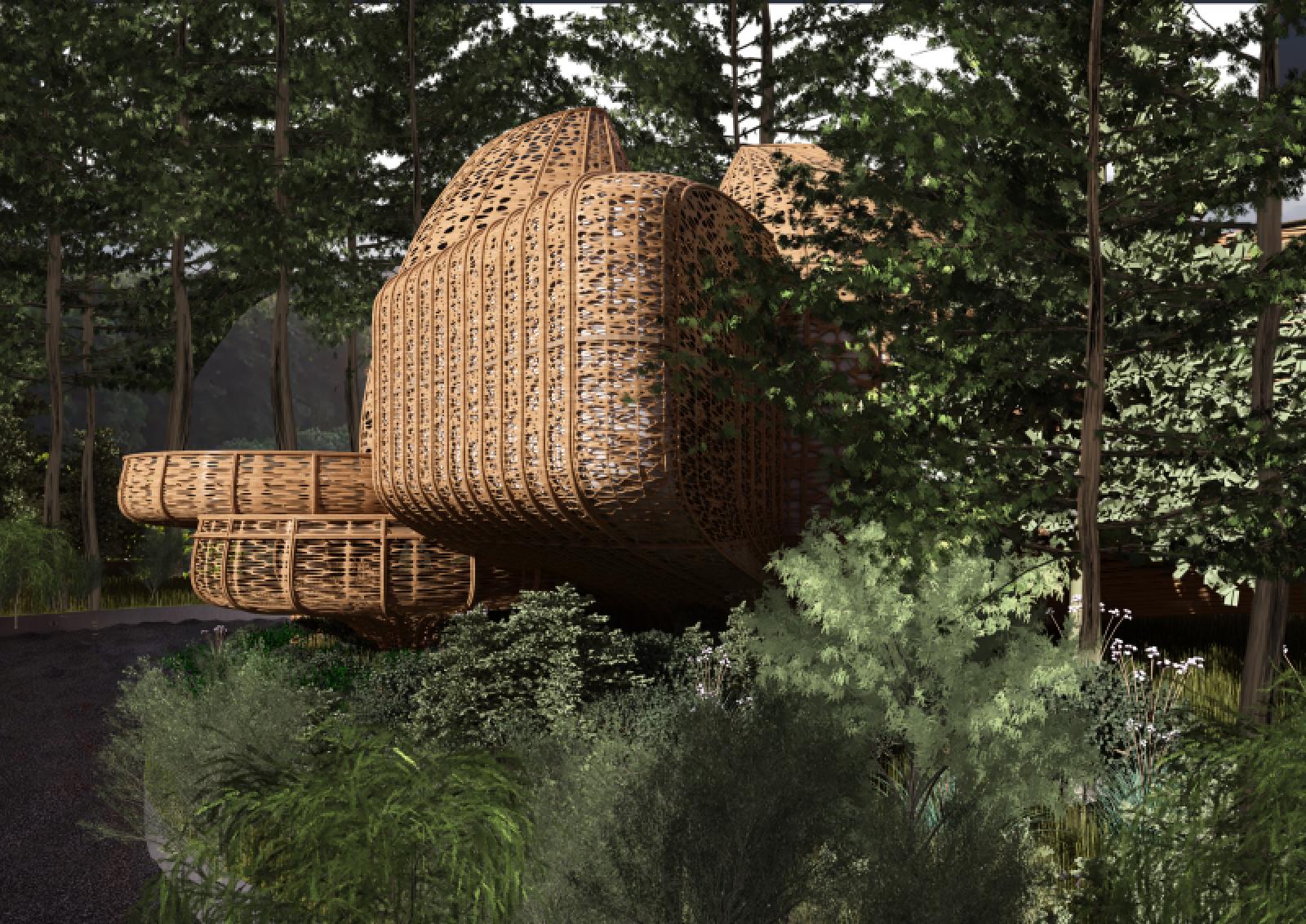
Image © Dave Edwards Design 
Image © Dave Edwards Design
These baskets are hand woven and while each one uses a similar fabrication process using the same material, they are also uniquely crafted objects, with regional differences too. The design recalls this by each being a crafted bamboo object with subtle differences in density and texture, recalling both the form and texture of these baskets scattered across the forest landscape.
Form and Massing
The formal expression of the dwelling typologies is one of agglomeration different units are arranged as clusters of volumes defined by their function, these are arranged to provide 360 views of the surrounding landscape and are often open to the top to allow unobstructed views of the canopy and the night sky after dark. By lifting the buildings off the ground to minimize impact on the surroundings this provides better views of the surrounding landscape from within the trees.
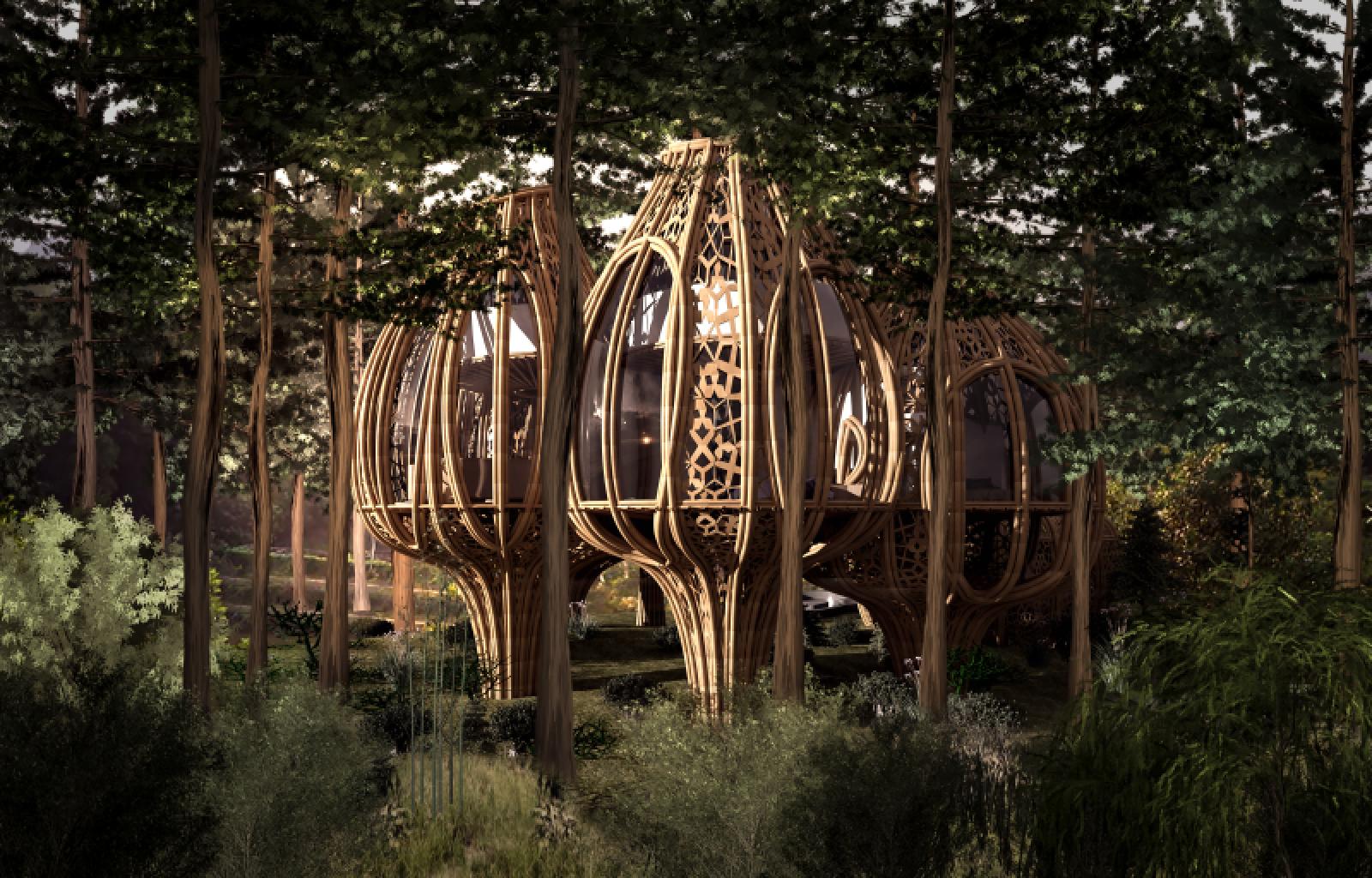
Image © Dave Edwards Design
Transparency is important to connect people with the surrounding landscape but too much can be uncomfortable, we felt the building skin should act as a filter allowing a dappled light and views out but also providing shelter and a sense of privacy and protection from the landscape beyond. The connectivity has an added benefit after dark with the internal lighting providing a glow out into the landscape providing a low-level light for external activities and wayfinding along the pathways without resorting to large scale inclusion of external lamps in the forest.
Materiality and Construction
The buildings are predominantly a bent bamboo pole framework bundled together maximizing the natural abondance and ecological benefits of a fast-growing renewable material most often associated with scaffolding. Between the principal framing is a network of woven fibers that form an different densities and patterned screens according to location on the building envelope and orientation.
These elements are more cut into flexible strips will be described not by a definitive end result but by the density required. Behind this is the glazing line, that provides thermal control where necessary these are often to be sliding screens allowing inhabitants the ability to open up the forest whilst maintaining some level of privacy and screening from outside through the external screens.
To minimize foundations simple screw piles will have precast footings tailored to each typology to lift the bamboo structure off the damp earth protecting it from degradation. Floors are constructed of simple exposed bamboo poles radially arranged and layered to form platforms and floor plates. Source by Dave Edwards Design.

